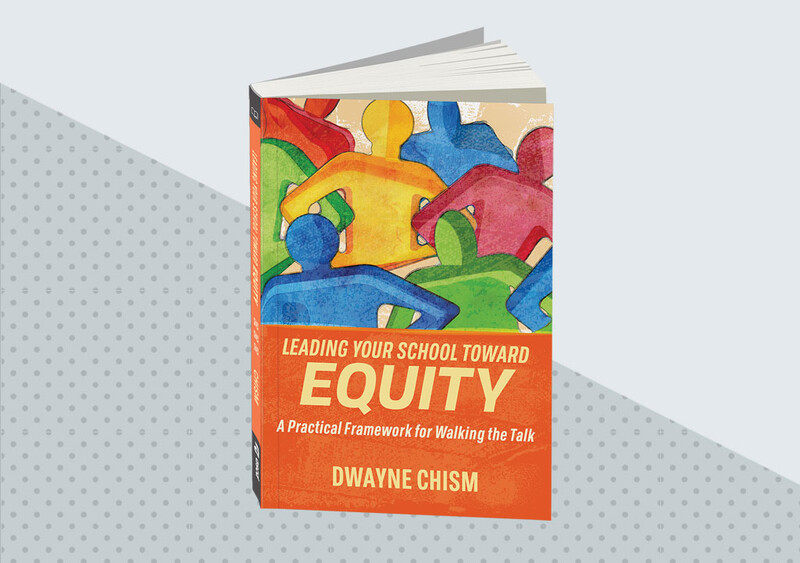Having spent over 24 years working in schools, I have witnessed the struggle leaders face to produce academic results and achieve equity. Driven by the need for improved test results, many well-intended leaders and their staff stray off course. They focus on publicly demonstrating actions that portray the work of equity but miss an important element—coherence—that must be established for schools to succeed in equity work. For action steps to reach their full potential within a school environment, leaders must have a deep awareness of how equity is ultimately achieved. In other words, a collective understanding around equity must come first to maximize the value and intent of any outward equity actions.
To get to this deep awareness, a leader needs to establish a way of going about their day that continually reinforces a level of coherence within the school culture around the purpose and nature of equity work. My most recent book, Leading Your School Toward Equity (ASCD, 2022), speaks to how leaders and schools can create the conditions or circumstances in which all continuous improvement initiatives can ultimately thrive. The Equity Leadership Framework, outlined in detail in the book, includes the following four steps that support continuous improvement and equity:
1. Define and Clarify Equity
Leaders must craft a systematic approach that builds consensus around a standard definition and vision of equity. In a perfect scenario, everyone comes to understand why the work is so crucial. Leaders can help staff come to consensus around the three core ideas of purpose, accountability, and action through leveraging academic, behavioral, and perceptual data. For example, after collectively reviewing the various data, staff members can assemble into groups to respond to the following:
- Why equity (Purpose)? Why is equity needed based on their observations?
- What is our responsibility (Accountability)? Thinking about the data, what must we hold ourselves accountable for in honoring equity?
- What actions are needed (Action)? Based on data conversations, what steps must we commit to take?
2. Create Discomfort
Leaders must promote intentional and continual dialogue about equity and race, even when these conversations are challenging. This part of the framework calls for leaders to use tools such as a Contemplation Play Card (discussed in the book) to learn how to facilitate deeper levels of reflection or how to set optimal conversation conditions.
3. Build Efficacy
Leaders must establish a unified culture where adults possess high levels of individual and collective efficacy. Again, everyone needs to be on the same page about effectively educating students of color. If they are not, it can set the culture back. During this step of the framework, leaders learn the importance of:
- Neutralizing weakness by utilizing evidence-based tools to detect and confront lower levels of efficacy and pedagogies that can create inequality.
- Sowing optimism by leveraging leadership presence, focusing on quick wins, empowering staff, and providing time for collaborative practice.
- Supporting growth by modeling and actively providing effective support for staff.
4. Normalize Action
Leaders must operationalize action inside classrooms and throughout the school. They must focus on the actions needed to create consistent, sustained success over time. To do this, leaders can follow the 5 Step Equity Lens Analysis (outlined in the book) for impactful data collection. These exercises present the tools for conducting equity walks, equity-minded classroom data collection, and quality equity-focused coaching for teachers.
Leadership is Key
Lack of coherence surrounding the purpose and nature of equity work compromises school improvement efforts. Leadership is at the core of this work. For this reason, leaders are at the center of the Equity Leadership Framework as influencers who exhibit the focus, competence, and passion required for helping schools achieve equitable outcomes. The Equity Leadership Framework can help leaders build the skill and capacity to undertake actions that:
- align with the nature and scope of the work (focus).
- demonstrate the knowledge and wherewithal to lead the work (competence).
- and display the obligation and desire to do what it is right in the face of inequity (passion).
Why It Matters
To produce the educational outcomes equity demands, leaders need to intentionally take everyday actions that create an environment that is safe and supportive for students from any and all backgrounds. Leading Your School Toward Equity, and its accompanying Equity Leadership Framework, provides a detailed approach with the aim of securing a force of educational equity allies within the school culture—allies equipped to break the cycle of inequality.
This framework is not simply another idea to add to a school's extensive to-do list. Rather, it develops coherence for our efforts to better support students who are fighting against predictable outcomes. It’s about daily practices staff should perform, while providing hope for every student to succeed sustainably within a school. This framework will help leaders embrace their role as the leading factor in creating and sustaining environmental change.
Leading Your School Toward Equity
Veteran educator Dwayne Chism shows district, school, and teacher leaders a four-step process for taking equity work beyond talk and into effective action.









